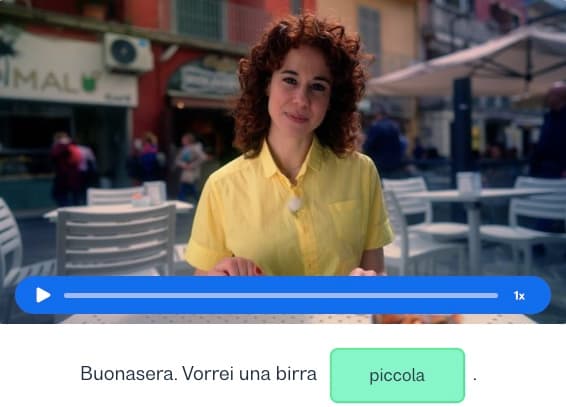I want to learn...
Italian articles are short words that introduce a person, animal or thing. Lucky for us, there’s only two kinds of articles: definite and indefinite.
Definite articles not only go before nouns, they refer to specific nouns. In English, the definite article is “the”. Meanwhile, indefinite articles introduce a non-specified person, place or thing. We have two in English: “a” or “an”, depending on whether the noun starts with a vowel (a, e, i, o, u) or not.
Today, let’s learn how to say “a” or “an” in Italian.
Italian indefinite articles
Like most languages, Italian indefinite articles or articoli indeterminativi agree with the noun they modify in gender (masculine or feminine). But don’t worry about whether these indefinite articles change according to number (plural or singular).
Why not? Because Italian doesn’t have plural indefinite articles, so they will always be singular. They simply won’t ever go with plural nouns.
And that rule will make indefinite articles in Italian a bit easier to learn, because that’s how it works in English too. For instance, you’d never say “an apples” or “a houses”.
Unlike definite articles in Italian (of which there are seven), there are only four indefinite articles you need to learn.
Which indefinite article you use will depend on:
The gender of the noun.
The first letters of the noun.
Pro-tip: You can usually tell whether a noun is masculine or feminine based on their ending. If it ends with -o, it’s a good guess they’re masculine. Reversely if it ends with -a, it’s likely feminine. But there’s always exceptions, like una foto (a photo).
Let’s begin with the Italian masculine indefinite articles: un and uno.
Masculine indefinite articles in Italian
| Nouns starting with a vowel or most consonants | Nouns starting with s + consonant, i + vowel, gn, pn, ps, x y, or z |
|---|---|
| un un bicchiere (a glass) un aperitivo (an aperitif) un libro (a book) un amico (a friend) | uno uno scontrino (a receipt) uno spuntino (a snack) uno zaino (a backpack) uno yogurt (a yogurt) |
Now, let’s look at feminine indefinite articles in Italian:una andun’.
Feminine indefinite articles in Italian
| Nouns starting with a consonant | Nouns starting with a vowel |
|---|---|
| una una ragazza (a girl) una studentessa (a student) una zia (an aunt) una casa (a house) | un’ un’amica (a friend) un’ora (an hour) un’acqua minerale (a mineral water) |
Technically,una andun’are the same article—when it comes before a vowel,una will be shortened and the “a” will be replaced with an apostrophe. The reason for this is that it makes the following vowel sound easier to pronounce and preserves Italian’s wonderful musicality.
Examples of Italian indefinite articles in action
Spot the bolded indefinite article in each sentence. Note how the noun it precedes will always be singular.
1. Sto cercando un nuovo libro.(I am looking for a new book.)
2. Hai un bar preferito?(Do you have a favorite café?)
3. Quando hai bisogno di un appuntamento?(When do you need an appointment?)
4. Quanto costa una cartolina?(How much is a postcard?)
5. Sai se c’è una stazione di polizia in questa zona?(Do you know if there's a police station in this area?)
6. Vorrei un gelato piccolo, per favore.(I’d like a small ice cream, please.)
7. C’è uno specchio a figura intera nel bagno.(There’s a full-length mirror in the bathroom.)
8. Devo andare tra un’ora.(I have to go in an hour.)
9. Lavoro in un’università.(I work at a university.)
10. Uno studente ha lasciato qui uno zaino, l’ha visto?(A student left a backpack here, have you seen it?)
Now you know more about indefinite articles in Italian and when to use them. With time, these articles become a natural part of speaking Italian--and certainly one of the less complex parts of Italian grammar.
Still, practice makes perfect! Now that you’ve seen how Italian indefinite articles work, it’s time to put them into practice. With Busuu, the learning never stops being fun. Try out our award-winning online courses or get support from our growing Italian speaking community.
Newlanguages


